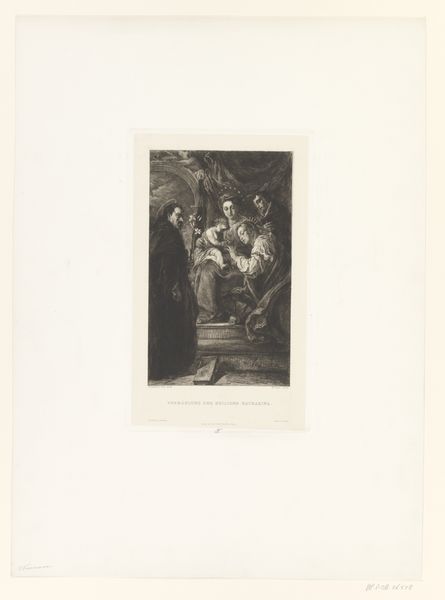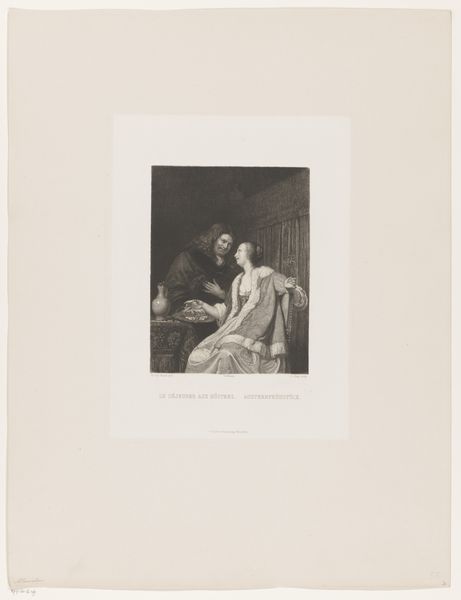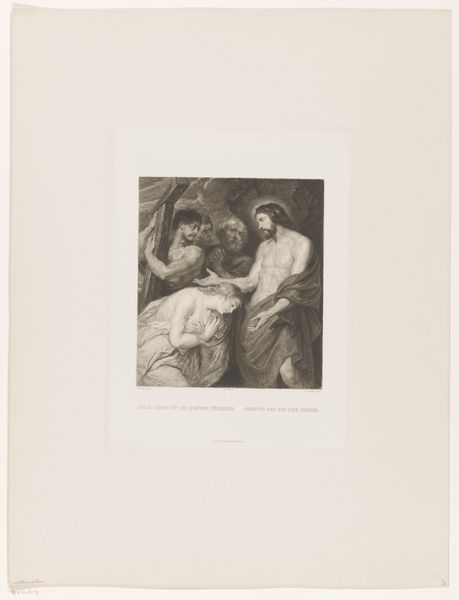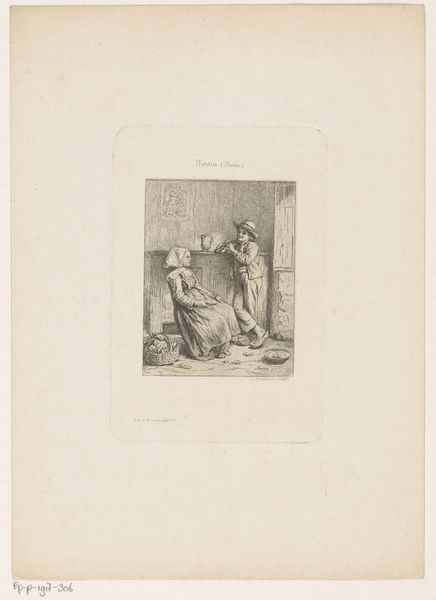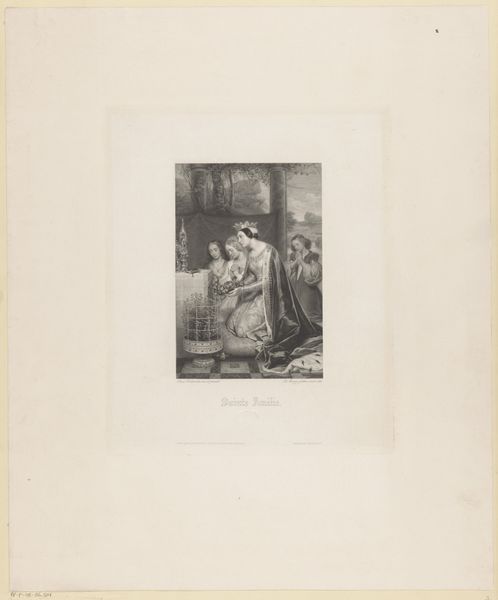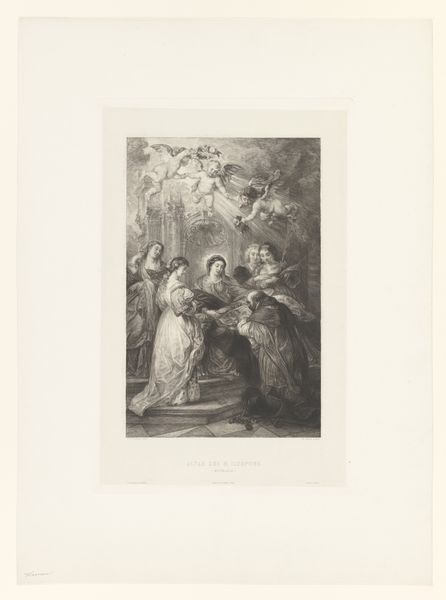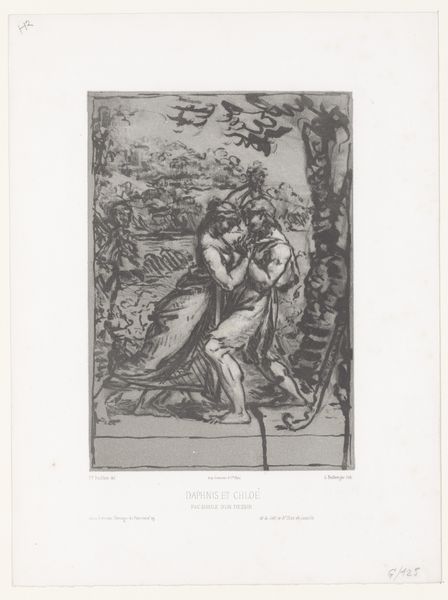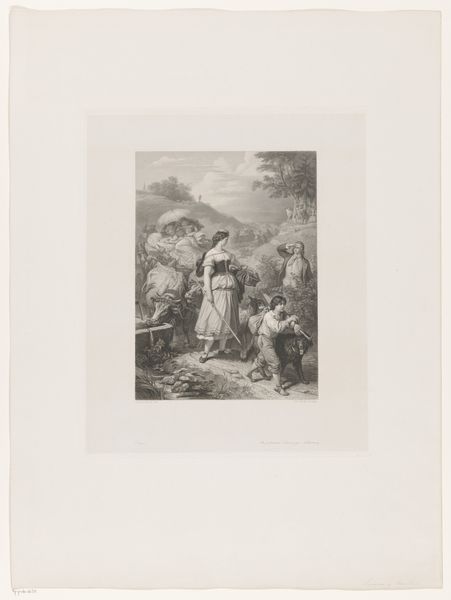
Dimensions: height 399 mm, width 294 mm
Copyright: Rijks Museum: Open Domain
Curator: This is William Unger’s engraving of “Heilige Justina,” dating from between 1861 and 1889, now residing here at the Rijksmuseum. Editor: What strikes me first is the tactile quality achieved with just lines. Look at the woman's patterned dress – it invites a closer inspection of material and method. The surface details must be extremely difficult. Curator: Absolutely. The print depicts Saint Justina, whose emblems often include the unicorn—symbolizing purity—and the palm frond signifying martyrdom. She stands next to what appears to be a donor figure in contemporary dress, perhaps underscoring faith across eras. Editor: Donor, perhaps patron, I wonder about the access involved in commissioning an engraving, the labour of production for these details. Engravings are, after all, an intensely material process. Look at how that patterning in her dress folds, bends, reflects light... incredible. Curator: It's Unger drawing on the artistic legacies of Romanticism and Academic art, all underpinned with a devotion to realist details and historicist leanings. The engraving captures not only an imagined moment but also embodies prevailing social values concerning faith and patronage. It's like a miniature stage. Editor: That’s a helpful observation. But let's also note it's still just ink and paper; those idealized visions required highly skilled engravers capable of articulating minute textures and values through labor and machinery. Curator: Fair point. Beyond the immediate narrative of the saint's virtue and the patron’s dedication, it serves as a visual repository. Saint Justina offers ideals, while the inclusion of a figure from Unger's era perhaps aimed to make the scene relatable to contemporary viewers... an invitation across time. Editor: Right—inviting reflection. It prompts you to consider the status of engraving as a commodity within a rapidly industrializing visual culture. That contrast informs how we view the piece. Curator: It offers, then, both spiritual reassurance through familiar emblems and simultaneously acts as a commentary on the social constructs surrounding its creation and viewing. The unicorn’s gentleness echoes Saint Justina’s tranquility—but then there are sharp edges, even within the sublime. Editor: A lovely and precise assessment! I appreciate recognizing the sharp contrasts, as I find that to be something which keeps my own ideas grounded, materially so.
Comments
No comments
Be the first to comment and join the conversation on the ultimate creative platform.
